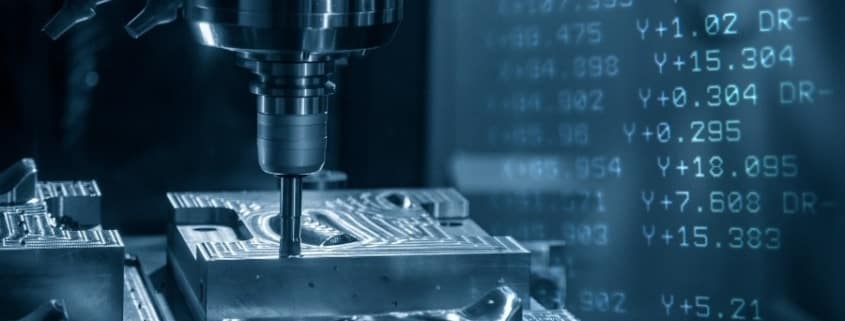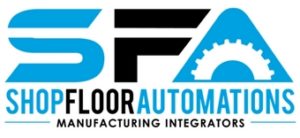
There are many methods of data transfer available for CNC machines. However, the preferred option for the largest, most productive manufacturers is using CNC data transfer software. This type of software is capable of transferring a wide range of different data types, a few of which we will cover here. We’ll also cover why that data is important and which data transfer software you should consider implementing at your own facility to accomplish your most important business goals.
The Importance of the Different Data Types
Every CNC machine must be configured to different tools and materials, as well as how it should be working with them. Even identical machines often require different data to deal with separate issues relating to drive systems and other discrepancies. That data needs to be transferred on a regular basis, to avoid catastrophic failure and unnecessary downtimes.
Keep your machines running at peak efficiency by ensuring the correct data is accurately and quickly transferred. Below, we’ll cover many of the different data types which can be transferred using CNC data transfer software, including programs, custom variables, offsets parameters, PLC registers, and more.
Programs
It’s helpful to think of programs as a set of instructions computers use to control a machine tool.
In a complete system, the computer will be connected to something like a mill, along with electrical drives, sensors, and more. In this system, the computer uses its programming to send instructions that control the movement of the machine.
Within programming, there are two main types of modes, incremental and absolute systems. Absolute movement moves the tool along a set of coordinates all based around the machine’s zero point. Incremental movement moves the tool a set distance based on where the current position of the tool.
Both methods of programming offer their own unique benefits and are capable of delivering great results. Most machines and tools are capable of handling both depending on your needs and preferences.
Variables
Let’s say you need to cut a wide range of materials, in a variety of sizes. Rather than starting your programming from scratch with each new material, you can use variables to make things easier.
Variables allow you to quickly define the parameters you need to work under, such as the size of the cut and the speed of the machine, based on the material you’re cutting. Used primarily in situations where values need to change based on the situation, you can assign values to variables which make them easy to refer back to whenever needed.
Offsets
Offsets are primarily used to take measurement of and assign value to the position of the tool being used. There are two types of offsets – tool offsets and fixture (or work) offsets.
Tool offsets are specified values and measurements used to shift the position of the tool so it can be utilized best. In other words, a tool offset is used as a representation of structure of the machine and tool. In some instances, new tools are designed around these offsets for specific applications and benefits.
A work, or fixture offset, measures the average distance between the zero of the machine and the work zero in the X-Z plane. Unlike tool offsets, work offsets are used to represent the specifications of the workpieces themselves.
Parameters
When people use tools, it’s helpful if they know how they’re supposed to work. The same goes for a machine using a tool. Parameters tell the CNC machine all the information about the specific tool being used, such as the features, specific functions, and how the tool should be used.
Parameters are used to specify settings for every feature and function a CNC machine will need to perform with a given set of tools. In many cases, there are up to thousands of parameters needed per CNC. The management of all those parameters often relies on CNC data transfer software extensively to keep everything in order.
PLC Registers
PLCs or “Programmable Logic Controllers” store and manipulate values representing the size and number of materials, etc.
What Data Transfer Software Should You Consider?
As the amount of data CNC machines rely on has increased an equally large number of software solutions have developed. How can you decide which is the best for your particular shop floor needs?
DNC Software
If you have a variety of CNC machines with different controllers, DNC software is an absolute must have. Responsible for managing CNC programs, machine parameters, and offsets with a single network, DNC software is known for transforming the capabilities of your shop floor for the better. Click here to learn more about how DNC software can help you save time and increase production rates.
MTConnect Solutions
Sometimes compared to Bluetooth technology, MTConnect is an open, universal factory floor communication standard that is designed specifically for the shop floor environment. The protocol enables efficient transfer of data between devices (such as CNCs) and manufacturing shop floor software applications.
This software is especially effective in giving your equipment the ability to connect, deliver real-time data, and speak to each other. You can also display the information quickly on dashboards, smartphones, ERP/MRP systems, and other equipment. Click here to learn more about the benefits MTConnect can have on your processes.
Shop Floor Automations – Your CNC Data Transfer Software Specialists
At Shop Floor Automations, we offer CNC data transfer software for any brand, connection type, or age of CNC machine. Machine monitoring & CNC data collection delivers real-time analytics & OEE metrics to boost shop floor efficiency. Many DNC companies and installers have come and gone in the years, but Shop Floor Automations is still here to help you navigate the space with precision. We have over 3,000 installations in the USA, Mexico, Canada, and more.
Contact us today to learn more about our services or to ask us how we can help you select and integrate the perfect CNC data transfer software for your shop floor!
